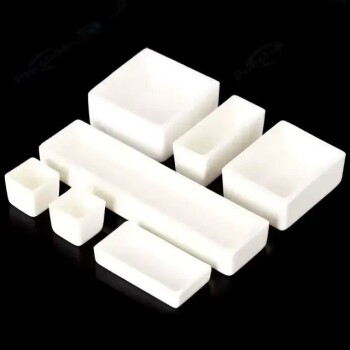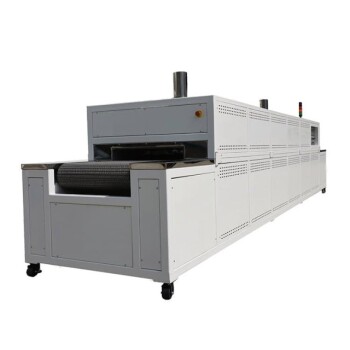نظرة عامة على أفران الدثر
الأنواع والاستخدامات
أفران الدثر، التي غالبًا ما يشار إليها باسم أفران الرماد عالية الحرارة، هي معدات تسخين متعددة الاستخدامات للغاية تجد تطبيقاتها في مجموعة من الصناعات. هذه الأفران لا غنى عنها في المعالجة الحرارية حيث تعمل على تسهيل التسخين والتبريد المتحكم به للمواد لتحقيق تحولات فيزيائية وكيميائية محددة. في قطاع المستحضرات الصيدلانية تُستخدم أفران الدثر في عمليات مثل التعقيم والتحلل الحراري، مما يضمن نقاء الأدوية وفعاليتها.
في الكيمياء التحليلية تلعب هذه الأفران دورًا حاسمًا في تحضير العينات، لا سيما في تقنيات مثل الرماد، حيث يتم تحويل المواد العضوية إلى مخلفات غير عضوية لإجراء مزيد من التحليل. بالنسبة لـ تحليل جودة الفحم ، تُستخدم أفران الدثر لتحديد محتوى الرماد والقيمة الحرارية لعينات الفحم، مما يوفر بيانات مهمة لإنتاج الطاقة والتقييمات البيئية.
تلبيد المعادن تلبيد المعادن تستفيد أيضًا من أفران التلبيد المعدنية التي تساعد في ضغط مساحيق المعادن في أشكال صلبة ذات خواص ميكانيكية محسنة. وبالمثل المعالجة الحرارية تستخدم هذه الأفران لتغيير البنية المجهرية للمعادن، وبالتالي تحسين صلابتها وقوتها ومقاومتها للتآكل.
في مجال حرق السيراميك تُعد أفران الكتم ضرورية لتحقيق درجات الحرارة العالية المطلوبة لتزجيج السيراميك، مما يضمن متانته وخصائصه الجمالية. وأخيرًا، في البحث التجريبي توفر هذه الأفران وسيلة موثوقة لإجراء التجارب ذات درجات الحرارة العالية، مما يدعم التقدم في مختلف التخصصات العلمية.
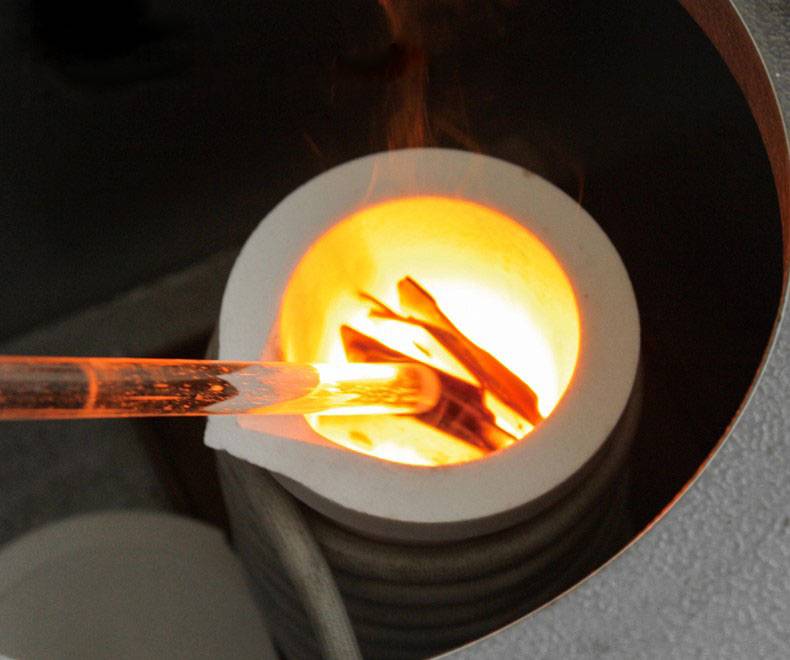
ميزات الأداء
صُممت أفران الدثر لتقديم مجموعة من ميزات الأداء التي تلبي الاحتياجات المختبرية المتنوعة. هذه الأفران قادرة على العمل ضمن نطاق واسع من درجات الحرارة، وغالبًا ما تتجاوز 1000 درجة مئوية، مما يجعلها مناسبة للتطبيقات ذات درجات الحرارة العالية مثل حرق السيراميك وتلبيد المعادن. سرعات التسخين في هذه الأفران سريعة بشكل ملحوظ، مما يسمح بالعمليات الحرارية السريعة التي يمكن أن تقلل بشكل كبير من أزمنة الدورات التجريبية.
يعد التحكم الدقيق في درجة الحرارة ميزة مهمة أخرى، مما يضمن قدرة الفرن على الحفاظ على درجات حرارة دقيقة، وهو أمر ضروري للتجارب التي تتطلب دقة عالية. وغالبًا ما يتحقق هذا المستوى من التحكم من خلال أنظمة التحكم في درجة الحرارة المتقدمة التي توفر دقة في حدود ± 1 درجة مئوية أو أفضل، مما يجعلها مثالية للكيمياء التحليلية والتطبيقات الحساسة الأخرى.
أحجام غرف الأفران المكتومة قابلة للتخصيص، مما يتيح للمختبرات اختيار الحجم المناسب بناءً على احتياجاتها الخاصة. وسواء أكان التعامل مع عينات صغيرة أو دفعات كبيرة، تضمن المرونة في تصميم الحجرة أن الفرن يمكن أن يستوعب مختلف الإعدادات التجريبية.
تتميز بعض الموديلات المتقدمة بغرف من الألياف الخزفية الموفرة للطاقة، والتي لا تعزز كفاءة الفرن فحسب، بل تساهم أيضًا في متانته. هذه الغرف مصممة للاحتفاظ بالحرارة بشكل أكثر فعالية، مما يقلل من استهلاك الطاقة ويطيل عمر الفرن. هذا المزيج من كفاءة الطاقة والمتانة يجعل غرف الألياف الخزفية خيارًا مفضلًا للعديد من المختبرات.
الخصائص الرئيسية
تتميز أفران الدثر بالعديد من الخصائص الرئيسية التي تجعلها مناسبة لمجموعة متنوعة من التطبيقات المختبرية والصناعية. هذه الخصائص لا تعزز وظائف الفرن فحسب، بل تضمن أيضًا السلامة والكفاءة في التشغيل.
إحدى الميزات البارزة هي الهيكل ذو التصميم المنفصل الذي يتيح سهولة الصيانة والإصلاح. يفصل هذا التصميم عادةً حجرة التسخين عن لوحة التحكم، مما يقلل من مخاطر المخاطر الكهربائية ويجعل استبدال المكونات مثل عناصر التسخين أسهل.
وحدات التحكم الذكية هي عنصر مهم آخر، حيث توفر أتمتة ودقة متقدمة. يمكن برمجة وحدات التحكم هذه لإدارة دورات التسخين المعقدة، مما يضمن تشغيل الفرن ضمن نطاق درجة الحرارة والمدة المطلوبة. وغالبًا ما تأتي مزودة بواجهات سهلة الاستخدام، مما يسهل على المشغلين المبتدئين إعداد الفرن ومراقبته.
إن عناصر التسخين المتينة ضرورية للحفاظ على أداء ثابت على مدى فترات طويلة. يمكن لهذه العناصر، التي غالبًا ما تكون مصنوعة من مواد عالية الجودة مثل كربيد السيليكون أو ثنائي مبيد الموليبدينوم أن تتحمل درجات الحرارة العالية دون أن تتحلل، مما يضمن تسخينًا موثوقًا وعمرًا طويلًا للفرن.
أنظمة متقدمة للتحكم في درجة الحرارة توفر تنظيمًا دقيقًا لدرجة الحرارة الداخلية. وهذا أمر بالغ الأهمية للتجارب التي تتطلب ظروف درجة حرارة دقيقة، مثل تلك الموجودة في الكيمياء التحليلية أو علم المواد. توفر العديد من الأفران الحديثة توحيد درجة الحرارة في حدود ± 1 درجة مئوية، وهو أمر حيوي للحصول على نتائج متسقة.
السلامة هي الشغل الشاغل في البيئات المختبرية، والأفران المكتومة مجهزة بالعديد من ميزات السلامة . ويمكن أن يشمل ذلك آليات الإغلاق التلقائي، وأجهزة إنذار الحرارة الزائدة، وأزرار الإيقاف في حالات الطوارئ، مما يضمن إمكانية تشغيل الفرن بأمان حتى في الظروف غير الخاضعة للإشراف.
وأخيرًا، القدرة على تخصيص غرف الفرن تتيح المرونة في التعامل مع أنواع وأحجام مختلفة من العينات. سواء أكنت بحاجة إلى غرفة صغيرة للتحليلات الروتينية أو غرفة أكبر للمعالجة بالجملة، تضمن الخيارات القابلة للتخصيص إمكانية تخصيص الفرن لتلبية الاحتياجات المحددة.
وباختصار، فإن الجمع بين هذه الخصائص يجعل أفران الدثر خيارًا متعدد الاستخدامات وموثوقًا لمجموعة واسعة من التطبيقات المختبرية.
اختيار فرن الدثر المناسب
متطلبات درجة الحرارة
عند اختيار فرن دثر، من الضروري مراعاة نطاق درجة الحرارة المطلوبة لتجاربك المحددة. تتطلب العمليات المختلفة درجات حرارة متفاوتة في درجات الحرارة القصوى، وفهم هذه الاحتياجات أمر ضروري لاختيار المعدات المناسبة.
على سبيل المثال، يتطلب تجفيف المواد عادةً درجات حرارة معتدلة، تتراوح عمومًا من 500 إلى 600 درجة مئوية. ويضمن هذا النطاق تجفيف المواد بكفاءة دون التسبب في تدهور حراري. ومن ناحية أخرى، غالبًا ما تتطلب عمليات حرق السيراميك درجات حرارة أعلى بكثير، تصل أحيانًا إلى 1700 درجة مئوية. وتعد درجات الحرارة المرتفعة هذه ضرورية لتحقيق الخصائص الهيكلية والفيزيائية المطلوبة في السيراميك.
| نوع العملية | نطاق درجة الحرارة | أهمية التحكم في درجة الحرارة |
|---|---|---|
| تجفيف المواد | 500-600°C | يضمن التجفيف الفعال بدون تدهور حراري |
| حرق السيراميك | حتى 1700 درجة مئوية | تحقيق الخصائص الهيكلية والفيزيائية المطلوبة |
يساعد فهم متطلبات درجة الحرارة هذه في اختيار فرن دثر يمكنه تلبية الاحتياجات الحرارية لتجاربك بدقة، مما يضمن الحصول على أفضل النتائج وكفاءة المعالجة.
حجم غرفة الفرن
عند اختيار فرن دثر، يعتبر حجم الحجرة من الاعتبارات الحاسمة التي تؤثر بشكل مباشر على كفاءة تجاربك ونتائجها. يجب أن يكون حجم الحجرة متناسبًا مع حجم وعدد العينات التي تنوي معالجتها. تستلزم العينات الأكبر حجمًا أو حجمًا أكبر من العينات وجود حجرة فرن أكبر لاستيعاب المساحة اللازمة للتسخين والمعالجة المنتظمة.
لتحديد حجم الحجرة المناسب، ابدأ بتقييم أبعاد عيناتك النموذجية. ضع في اعتبارك ما إذا كانت هذه العينات قياسية أو كبيرة بشكل غير عادي. على سبيل المثال، إذا كنت تعمل بشكل متكرر مع قطع خزفية كبيرة أو عينات متعددة في وقت واحد، فلا غنى عن غرفة أكبر. وعلى العكس من ذلك، فإن الغرف الأصغر حجمًا مناسبة للعينات المدمجة أو الفردية الأكثر إحكامًا، مما يحسن من كفاءة المساحة والطاقة.
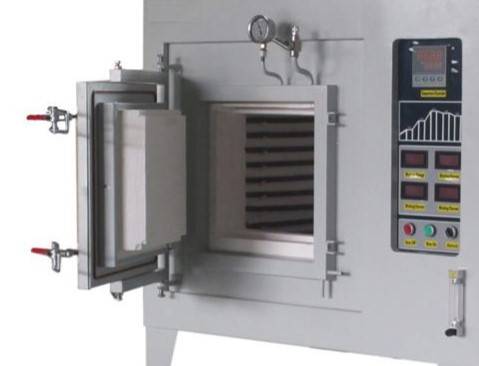
هناك عامل آخر يجب مراعاته وهو حجم العينات التي تعالجها بانتظام. قد تتطلب متطلبات الإنتاجية العالية غرفة أكبر لتجنب إعادة التحميل المتكرر والحفاظ على التشغيل المستمر. وهذا أمر مهم بشكل خاص في الصناعات التي تكون فيها المعالجة على دفعات شائعة، كما هو الحال في مختبرات الأدوية أو الكيمياء التحليلية.
باختصار، يجب أن يسترشد اختيار حجم حجرة الفرن بالاحتياجات المحددة لمختبرك. من خلال التقييم الدقيق لحجم وحجم العينات الخاصة بك، يمكنك اختيار فرن دثر مع حجرة تضمن الأداء الأمثل والكفاءة في تجاربك.
انتظام درجة الحرارة
لإجراء تجارب دقيقة، يعد اختيار فرن ذو انتظام درجة حرارة عالية أمرًا بالغ الأهمية. يقاس هذا التوحيد عادةً بالتباين في درجة الحرارة عبر المنطقة الساخنة، وغالبًا ما يتم التعبير عنه كنطاق (على سبيل المثال، ± 20 درجة فهرنهايت). على سبيل المثال، توفر الأفران المطابقة لمعيار AMS 2750D، الفئة 4، درجة حرارة موحدة تبلغ ± 20 درجة فهرنهايت ضمن نطاق 300-600 درجة فهرنهايت. ويضمن هذا المستوى من الدقة أن جميع العينات داخل حجرة الفرن تشهد تسخينًا متسقًا، وهو أمر ضروري للحصول على نتائج قابلة للتكرار.
ومع ذلك، لا تتطلب جميع التطبيقات مثل هذا الاتساق الصارم. قد لا يتطلب تجفيف المواد العامة، على سبيل المثال، نفس المستوى من الدقة. وفي هذه الحالات، قد يكون الفرن ذو مواصفات توحيد درجة الحرارة الأوسع نطاقًا كافيًا، مما يقلل التكاليف دون المساس بالفعالية الإجمالية للعملية.
يتأثر توحيد درجة الحرارة في الفرن إلى حد كبير بتصميم المنطقة الساخنة، بما في ذلك العزل وترتيب عناصر التسخين. ويتم تحقيق التوحيد الأمثل من خلال التصميم الدقيق الذي يقلل من الفجوات والفتحات، خاصةً في النقاط الحرجة مثل منافذ خروج الغاز. وبالإضافة إلى ذلك، يمكن أن يساعد نظام التسخين متعدد المناطق في ضبط مدخلات الطاقة ديناميكيًا، مما يضمن توزيعًا أكثر اتساقًا لدرجة الحرارة عبر الغرفة.
| نطاق درجة الحرارة | التوحيد (± درجة فهرنهايت) | فئة AMS 2750D |
|---|---|---|
| 300-600°F | 20 | الفئة 4 |
| 600-900°F | 15 | الفئة 3 |
| 900-2500°F | 10 | الفئة 2 |
يمكن لفهم هذه المواصفات أن يرشدك في اختيار الفرن المناسب لاحتياجات مختبرك المحددة، وتحقيق التوازن بين الدقة والتطبيق العملي.
معدل ارتفاع درجة الحرارة
عند اختيار فرن دثر لاحتياجات مختبرك، يعد معدل ارتفاع درجة الحرارة عاملًا حاسمًا يجب مراعاته، خاصةً بالنسبة للعمليات التي تتطلب تدويرًا حراريًا سريعًا. يمكن للفرن الذي يتميز بمعدل ارتفاع سريع في درجة الحرارة أن يقلل بشكل كبير من الوقت اللازم للوصول إلى درجة حرارة التشغيل المطلوبة، وبالتالي تسريع الجداول الزمنية للتجارب وتحسين الكفاءة الكلية.
بالنسبة للتطبيقات مثل التلبيد السريع أو المعالجات الحرارية السريعة، لا غنى عن فرن قادر على تحقيق تدرجات حرارة عالية في فترة قصيرة. وتتطلب هذه العمليات الحرارية السريعة معدات يمكنها الانتقال بسرعة من درجات الحرارة المحيطة إلى درجات الحرارة التشغيلية، مما يضمن تغيير خصائص المواد في الإطار الزمني المطلوب.
ومع ذلك، من المهم ملاحظة أنه لا تتطلب جميع العمليات المختبرية معدل ارتفاع سريع في درجات الحرارة. فالتلبيد الروتيني، على سبيل المثال، قد لا يتطلب هذه الميزة، لأنه غالبًا ما ينطوي على تسخين مطول عند درجة حرارة ثابتة. في مثل هذه الحالات، قد يكون الفرن ذو معدل ارتفاع درجة الحرارة الأكثر اعتدالًا كافيًا، مما يوازن بين الأداء وفعالية التكلفة.
| نوع العملية | متطلبات معدل ارتفاع درجة الحرارة |
|---|---|
| العمليات الحرارية السريعة | عالية (ارتفاع سريع في درجة الحرارة) |
| التلبيد الروتيني | معتدل (ارتفاع ثابت في درجة الحرارة) |
باختصار، في حين أن معدل ارتفاع درجة الحرارة السريع يمكن أن يغير قواعد اللعبة في بعض التطبيقات المختبرية، إلا أنه ليس ضروريًا عالميًا. سيساعدك النظر بعناية في احتياجاتك التجريبية المحددة على تحديد التوازن الأمثل بين السرعة والتكلفة.
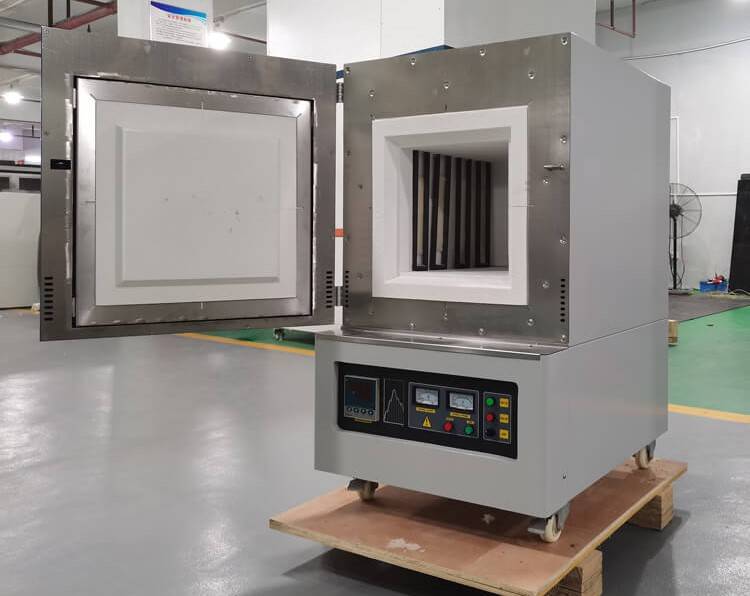
دقة التحكم
بالنسبة للتجارب التي تتطلب تحكمًا دقيقًا في درجة الحرارة، من الضروري اختيار أفران ذات دقة عالية، عادةً في حدود ± 1 درجة مئوية أو أفضل. يضمن هذا المستوى من الدقة أن تظل الظروف الحرارية متسقة وضمن المعلمات المطلوبة، وهو أمر بالغ الأهمية للتجارب التي تتضمن مواد حساسة أو تفاعلات كيميائية دقيقة.
| مستوى الدقة | التطبيقات النموذجية |
|---|---|
| ± 1 درجة مئوية أو أفضل | الكيمياء التحليلية والأبحاث الصيدلانية والدراسات التجريبية التي تتطلب تحكمًا دقيقًا في درجة الحرارة. |
| ± 5 درجة مئوية أو أعلى | معالجات التسخين العامة وتجفيف المواد وعمليات التلبيد الروتينية. |
في المقابل، قد لا تتطلب معالجات التسخين العامة، مثل تجفيف المواد أو التلبيد الروتيني، مثل هذه الدقة الصارمة. وغالبًا ما تتحمل هذه العمليات نطاقًا أوسع من التباين في درجات الحرارة، مما يجعل الأفران ذات التحكم الأقل دقة كافية لتلبية احتياجاتها. ولذلك، يجب أن يتماشى اختيار الفرن مع المتطلبات المحددة للتجربة لضمان كل من الكفاءة والدقة.
مادة الفرن
عند اختيار فرن دثر، تعتبر مادة الموقد عاملًا حاسمًا يؤثر بشكل مباشر على أداء الفرن وطول عمره. والمادتان الأساسيتان المستخدمتان في الموقد هما الألياف الخزفية والطوب الحراري، حيث تقدم كل منهما مزايا مميزة مصممة خصيصًا لتطبيقات مختلفة.
تشتهر مواقد الألياف الخزفية بقدرات التسخين السريع وكفاءة الطاقة. تتكون هذه المواقد من مواد عازلة خفيفة الوزن تسمح بتغيرات سريعة في درجة الحرارة، مما يجعلها مثالية للعمليات التي تتطلب دورات تسخين متكررة أو سريعة. ويساعد تصميمها الموفر للطاقة في تقليل تكاليف التشغيل، وهو أمر مفيد بشكل خاص للمختبرات حيث يمثل استهلاك الطاقة مصدر قلق رئيسي.
من ناحية أخرى، صُممت مواقد الطوب الحراري لتحمل درجات الحرارة القصوى وهي أكثر متانة للتطبيقات ذات درجات الحرارة العالية. تُصنع هذه المواقد من مواد يمكنها تحمل التعرض لفترات طويلة للحرارة العالية دون أن تتحلل، مما يجعلها مناسبة للعمليات التي تتطلب معالجة مستمرة في درجات حرارة عالية، مثل حرق السيراميك أو تلبيد المعادن. وعلى الرغم من أنها قد تستغرق وقتًا أطول للتسخين مقارنةً بموقدات الألياف الخزفية، إلا أن متانتها الفائقة تضمن عمر خدمة أطول وأداءً ثابتًا في ظل الظروف الصعبة.
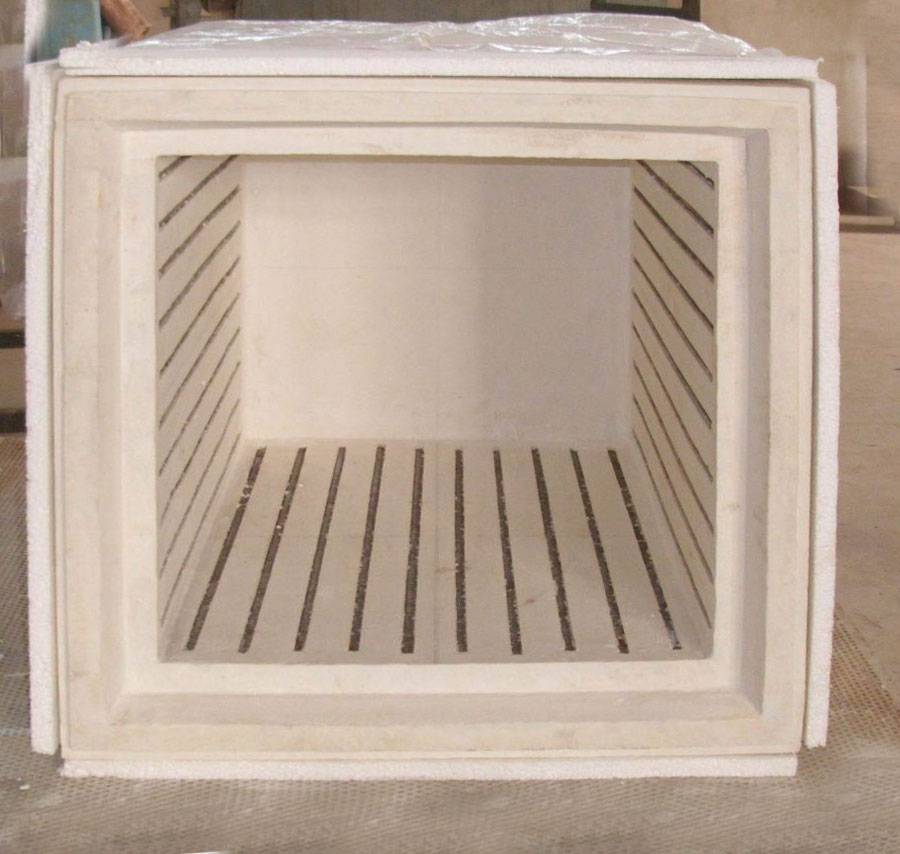
يعتمد الاختيار بين هذه المواد على المتطلبات المحددة للعمليات المختبرية الخاصة بك. بالنسبة للتجارب التي تتطلب تسخينًا سريعًا وكفاءة في استخدام الطاقة، فإن مواقد الألياف الخزفية هي الخيار المفضل. ومع ذلك، بالنسبة للتطبيقات التي تنطوي على عمليات مستمرة في درجات حرارة عالية، توفر مواقد الطوب الحراري المتانة والموثوقية اللازمة.
ميزات إضافية
عند اختيار فرن دثر، من الضروري مراعاة الميزات التي يمكن أن تعزز وظائف وكفاءة تجاربك. أدوات التحكم القابلة للبرمجة مفيدة بشكل خاص للتجارب التي تتطلب معالجات حرارية دقيقة ومتعددة المراحل. تسمح عناصر التحكم هذه بتخصيص ملفات تعريف التسخين، مما يضمن تنفيذ كل مرحلة من مراحل العملية بدقة واتساق.
الإنذارات التلقائية هي ميزة أساسية أخرى، حيث توفر إشعارات في الوقت الفعلي للأحداث الحرجة مثل الوصول إلى درجة حرارة محددة أو تقلبات الطاقة أو أعطال النظام. يضمن ذلك إمكانية معالجة أي مشاكل على الفور، مما يقلل من مخاطر حدوث أخطاء تجريبية أو تلف المعدات.
بالنسبة للتجارب التي تتضمن مواد حساسة أو أو العمليات الحرجة من حيث الوقت ميزات مثل المراقبة عن بعد و وتسجيل البيانات لا تقدر بثمن. تسمح لك هذه الإمكانيات بتتبع بيانات درجة الحرارة وتسجيلها بمرور الوقت، مما يوفر رؤى قيمة حول أداء الفرن الخاص بك ونتائج تجاربك.
بالإضافة إلى ذلك، ضع في اعتبارك الأفران المزودة بما يلي بتقنيات موفرة للطاقة مثل غرف الألياف الخزفية التي توفر أوقات تسخين أسرع واستهلاكًا أقل للطاقة مقارنةً بأفران الطوب الحراري التقليدية. لا تقلل هذه الميزات من التكاليف التشغيلية فحسب، بل تساهم أيضًا في بيئة مختبرية أكثر استدامة.
من خلال تقييم هذه الميزات الإضافية بعناية، يمكنك اختيار فرن دثر لا يلبي احتياجاتك التجريبية فحسب، بل يعزز أيضًا الكفاءة والفعالية الإجمالية لأعمالك المعملية.
المنتجات ذات الصلة
- فرن دثر 1200 ℃
- فرن كاتم للصوت 1700 ℃
- فرن دثر 1400 ℃
- 1800 ℃ فرن دثر 1800
- ألومينا (Al2O3) بوتقة خزفية لفرن غط المختبر





